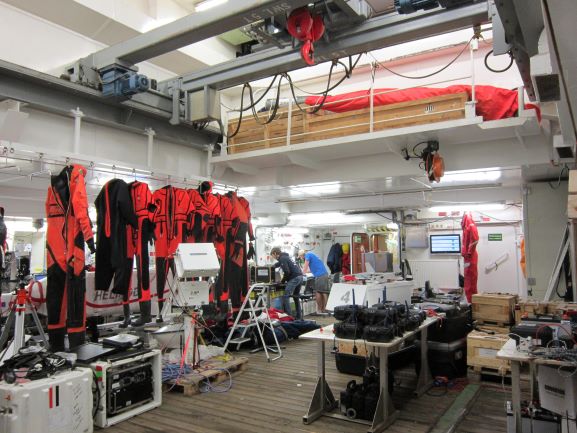by Radiance Calmer, a CIRES postdoctoral researcher
“The batteries are fully charged and already in the pulka. Toolbox, antennas, transmitter, bungee, ground station… and the Datahawk! I think we have everything for tomorrow’s flights.” It’s the evening. Jonathan (Hamilton) is going through all the materials that we take on the ice for our drone operations, making sure we don’t forget anything tomorrow morning. After a few weeks on the Polarstern, my orientation on the ship is much better, and we have organized our space for work and storage. This ship is packed with materials everywhere, and finding some space is rather challenging. We are sharing a workbench in the wet lab with the scientists from Tropos who operate the Beluga balloon. The Helipod is parked between the sinks and the wet suits hanging from the ceiling. Remote sensing instruments are almost being swallowed by all the material stored in the lab. As if the wet lab weren’t packed enough yet, all the batteries for all the team operations are now being charged in this room too. While I enjoy seeing people working on their instruments, I sometimes wish for more space to avoid having to drag all the boxes out from under the workbench 20 times a day… Our pulka (a type of sled) and the drones ready for flight are stored in the warm storage at the opposite end of the ship. We make our way between the coring instruments, the long drills for the ice and the boxes from the Eco team to access our materials. However, working space and storage are quite the dynamic environments, changing all the time. When some free space appears in the wet lab after an intensive cleaning session, some fresh air surrounds us. Not for long! Space is quickly claimed by instruments again! And we are now managing this reshuffle game with four drone platforms out of the boxes. Let’s see how many we can pile up!

